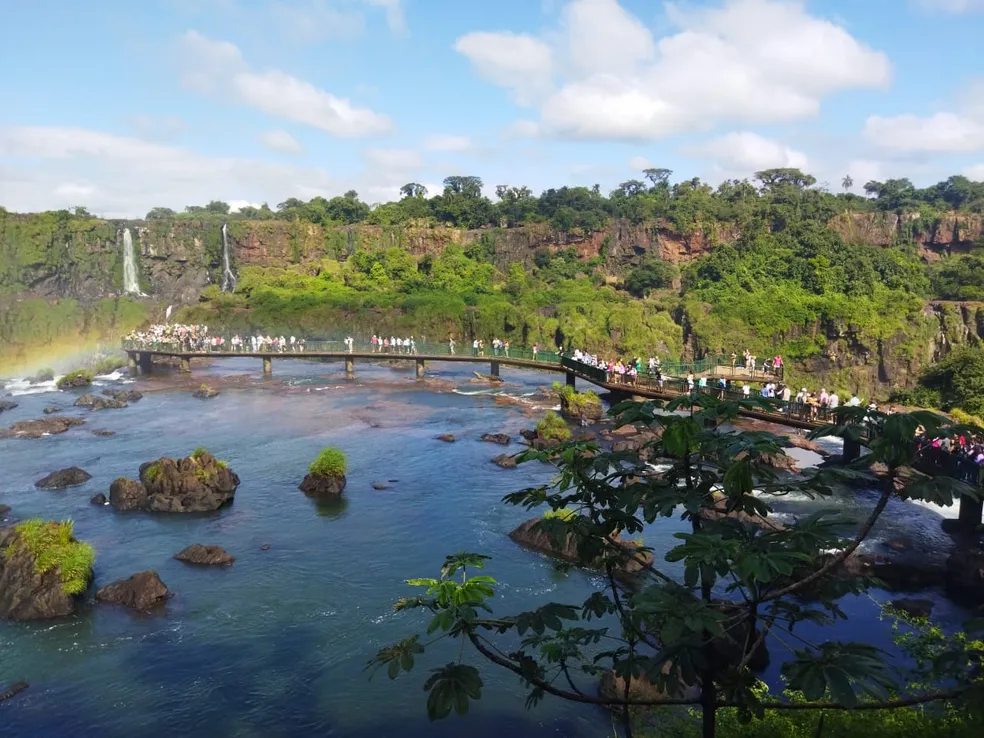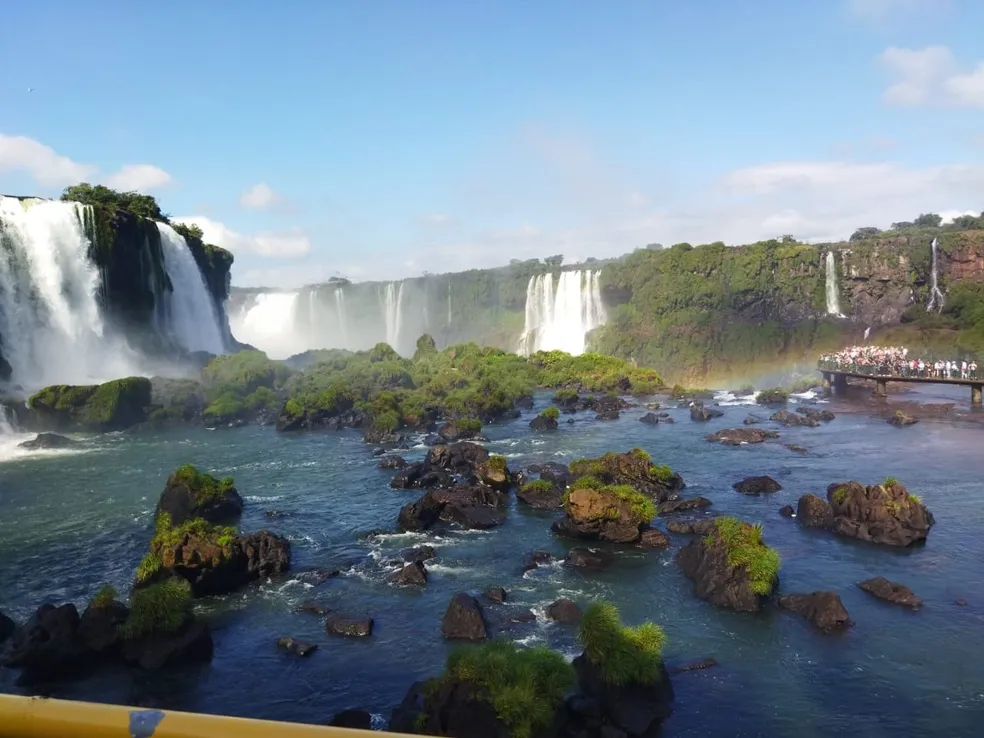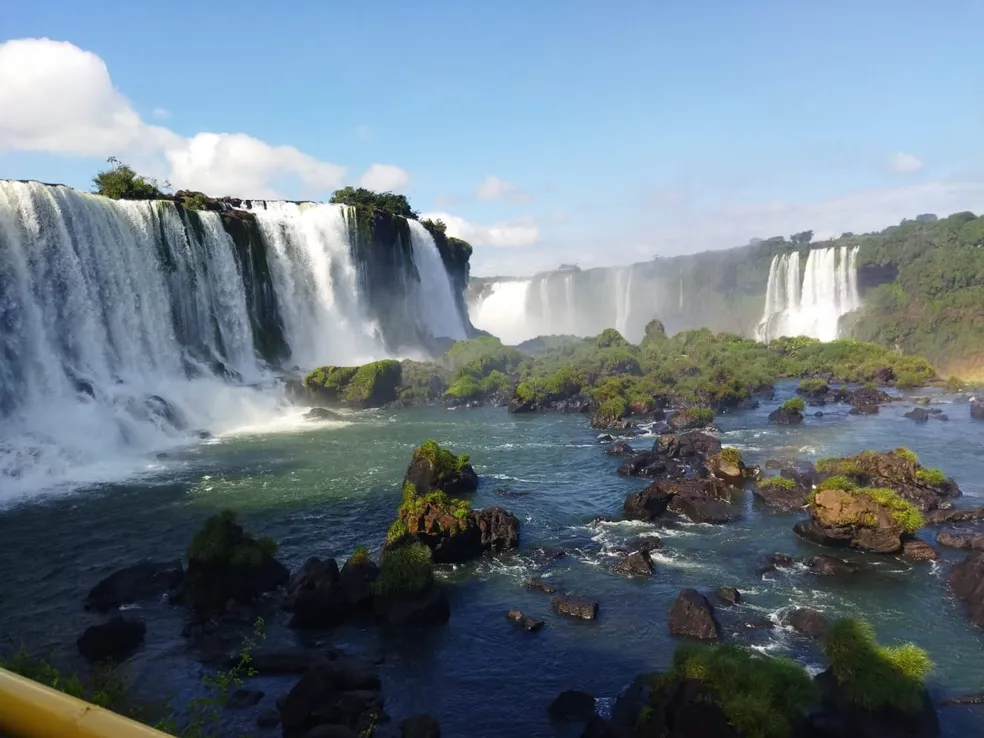The low flow of the Iguaçu River has impacted the scenery of the Iguaçu Falls, in Foz do Iguaçu, in western Paraná.
The lower flow makes the walls and stones along the riverbed more apparent.
In the early hours of this Monday (10), the water volume reached 398,000 liters per second, representing a quarter of the normal flow of 1.5 million liters, according to data from the Paranaense Energy Company (Copel).

The record occurred six months after the second-highest flow of the Iguaçu Falls in October 2022.
At that time, the water flow from the Iguaçu Falls exceeded 16.5 million liters per second.
The low flow, however, did not interfere with visitation to the Iguaçu National Park.
Between Friday (7) and Sunday (9), more than 25,600 people visited the site during the Easter holiday.

Most visitations were on Friday, with 11,100 tourists, according to the park’s advisory board.
The movement in the period was 10% higher than in 2022, when the unit received about 23,100 people.
Compared to 2019, the year with the highest visitation in the site’s history, the recovery was 83%.
At that time, about 30,500 people visited the falls during Easter.
Tourists from 26 Brazilian states and the Federal District visited the park.
About 12,000 foreigners from 55 different nationalities also visited the falls on Easter.
FALLS

According to the Iguaçu National Park, there are 275 falls cataloged, which makes the falls the largest group of waterfalls in the world.
The height of the falls ranges from 40 to 80 meters and can reach over 100 meters depending on the flow of the Iguassu River.
The shape of the Iguaçu Falls resembles a “horseshoe”.
The falls extend for 2.7 kilometers: 800 meters in Brazil and 1.9 kilometers in Argentina.
Thus, 70% of the falls belong to the Argentinean side and 30% to the Brazilian side.
The Capitania Fluvial divides the countries.
With information from g1

